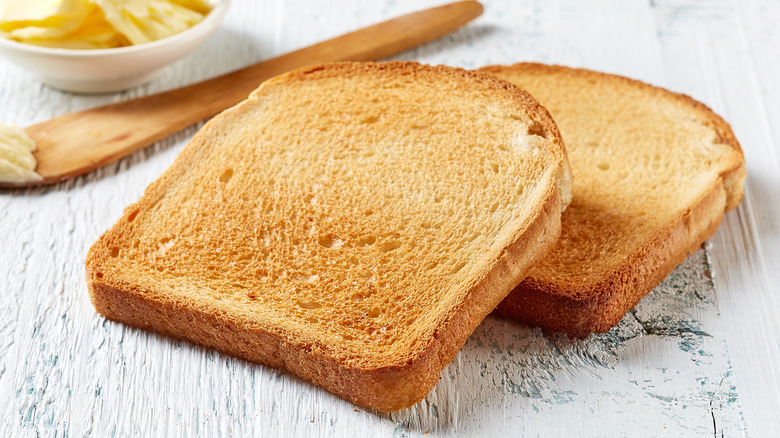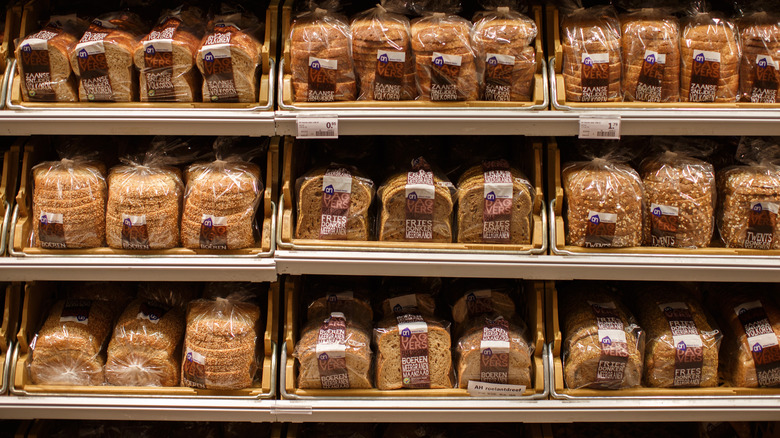Why Sliced Bread Was Once Banned By The FDA
You have probably heard the saying "it's the greatest thing since sliced bread." And there's no denying that sliced bread was a game-changer. After all, it's a lot easier to make a sandwich or whip up some toast for breakfast when you just have to grab a few slices out of the bag on the counter. Machine-sliced bread has been around since 1928, when it was invented by a man named Otto Rohwedder in Missouri (via History). Wonder Bread was one of the first commercially made bread companies to go mainstream in the U.S. and now, almost a century later, you can find dozens of brands and varieties at the grocery store, from whole grain to rye to pumpernickel.
But, while sandwich bread has become a staple in many American homes, it was not always considered a good thing. In fact, for a brief period of time back in the 1940s, sliced bread was actually banned by the Federal Drug Administration (FDA). Here's why it was outlawed all those years ago.
Sliced bread required too much plastic packaging
Despite the fact that Americans were going crazy over the invention of sliced bread, the U.S. government wasn't as impressed — or rather, they were concerned about what it was costing the country. On January 18, 1943, the FDA prohibited the use of bread-slicing machines, and thus, the sale of sliced bread (via Mental Floss). The reasoning behind the order? The U.S. was in the middle of World War II at the time and the government was concerned about how much wax paper and plastic sliced bread required for packaging (which unsliced bread did not).
But Americans weren't having it, and many were angry over the ban. Fortunately for the sliced bread enthusiasts, the government ended their order just three months later, saying, "The savings are not as much as we expected, and the War Production Board tells us that sufficient wax paper to wrap sliced bread for four months is in the hands of paper processor and the baking industry" (via Reason).

